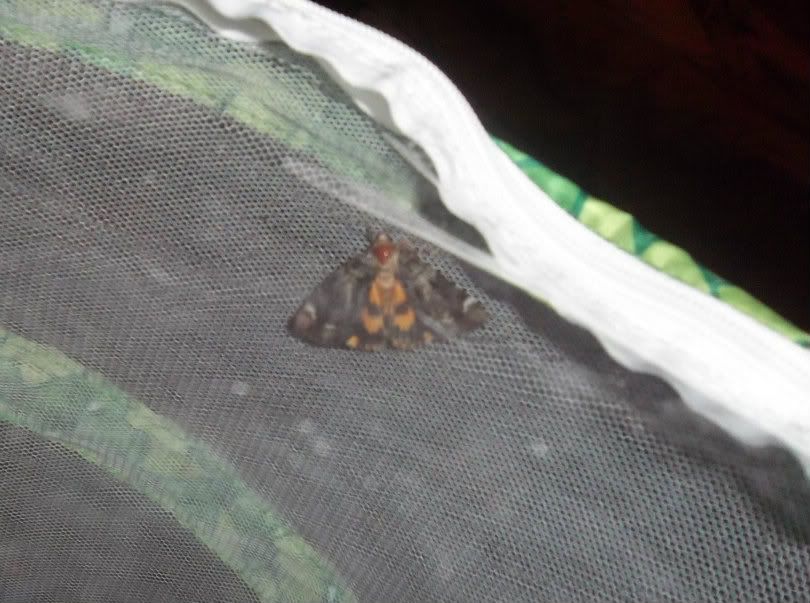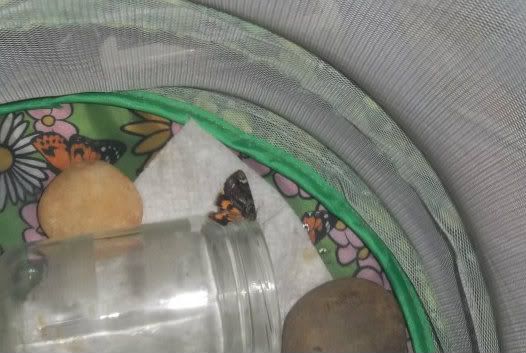|
|
Post by rayrard on Jul 12, 2012 18:58:17 GMT -8
my first tapping experience. Actually had ZERO luck with trees. It was a mixed bottomland forest, but it had just rained and it was wet and very humid (terrible mosquitoes). The trees were damp and had nothing on them. I found an abandoned trailer/house and RV unit along the trail and just for the heck of it I hit the support post of the porch and TWO Catocala flew off of it. I searched the entire house and there were dozens of Catocala on the thing. Is this normal or were the moths just escaping the rain?
On a dry day will the moths be more on the trees than the house or do they favor human structures? Is the time of day important? Do they go into hiding in the late afternoon? Are they more likely on trees in the early day? I was stunned how there was nothing on trees and so many on this house!
Looks like C. carissima, C. epione, and C. piatrix, and the little C. amica.
|
|
|
|
|
|
Post by rayrard on Jul 12, 2012 19:01:17 GMT -8
the moths Attachments:
|
|
ckswank
Full Member
  
Posts: 239
Country: USA
|
Post by ckswank on Jul 12, 2012 21:05:03 GMT -8
I used to find Catocalas during the day under the roofs of structures such as pavilions & picnic table covers.
Charlie
|
|
|
|
Post by habibi18 on Jul 18, 2012 15:41:25 GMT -8
Ooooh!! Funny this topic should come up. I had caught a Catocals sp. last week on my terrace and cannot find anything that looks like it. I've been researching anything and everything and the closest I've gotten would be Catocala innubens. Can someone confirm?  Hindwings were sort of greenish? Idk.....it was a beautiful moth.   Any ideas? |
|
|
|
Post by multicaudata on Sept 7, 2012 8:46:59 GMT -8
"I got my jar out and slowly moved toward the moth, until I was at a mere three inches. When I made my move it took off escaping my kill jar."
I used to have lots of them escape like this when I tried to net or jar them, but now I spear them with an insect pin attached to the end of my net handle. I spear the moth through the thorax, then pinch it immediately, resulting in a near-perfect specimen without "scalping" on the thorax.
I'm in California so I don't get nearly as many as you guys get in the East, but there are some pretty good places around here. This week I got C. piatrix dionyza and C. irene in a hardwood hammock in the California Delta, and there were many C. junctura there last month. Delta hammocks with willow, poplar, and walnut are probably the best you can do in CA.
|
|
|
|
Post by oehlkew on Sept 7, 2012 17:18:02 GMT -8
|
|
|
|
|
|
Post by kingha on Sept 19, 2012 12:33:10 GMT -8
Catocala minuta....Plate 8 , Legion of Night by Theodore Sargent
|
|
steve
Full Member
  
Posts: 231
|
Post by steve on Sept 19, 2012 23:10:16 GMT -8
What does tapping trees mean in this context? Never heard of that before
|
|
Deleted
Deleted Member
Posts: 0
|
Post by Deleted on Sept 20, 2012 5:33:55 GMT -8
One walks quietly (with as few vibrations as possible) through the woods and examines tree trunks during the day. After looking at the trunk and not seeing any, one taps it with a net handle or rim to cause a hiding/resting Catocala not spotted earlier to take off. One then watches where it lands and sneaks up on it and captures it. Tapping either works in a given situation like Tom P. had this year, or conditions are not just right and one is skunked. If you have detailed questions, contact Beetlehorn through here and ask him.
Just remember that Catocalas are never really consistent. One time sugaring or tapping works and another day/night, it doesn't.
|
|
|
|
Post by kingha on Jun 4, 2013 16:01:37 GMT -8
Ooooh!! Funny this topic should come up. I had caught a Catocals sp. last week on my terrace and cannot find anything that looks like it. I've been researching anything and everything and the closest I've gotten would be Catocala innubens. Can someone confirm?  Hindwings were sort of greenish? Idk.....it was a beautiful moth.   Any ideas? |
|
|
|
Post by kingha on Jun 4, 2013 16:03:29 GMT -8
Catocala minuta, ( Little Underwing )
|
|